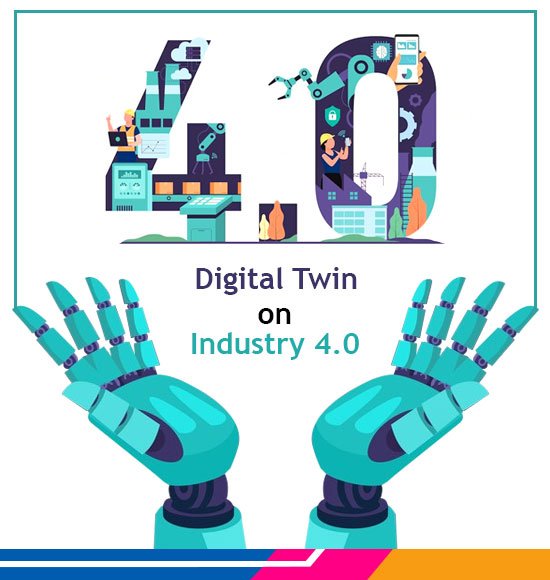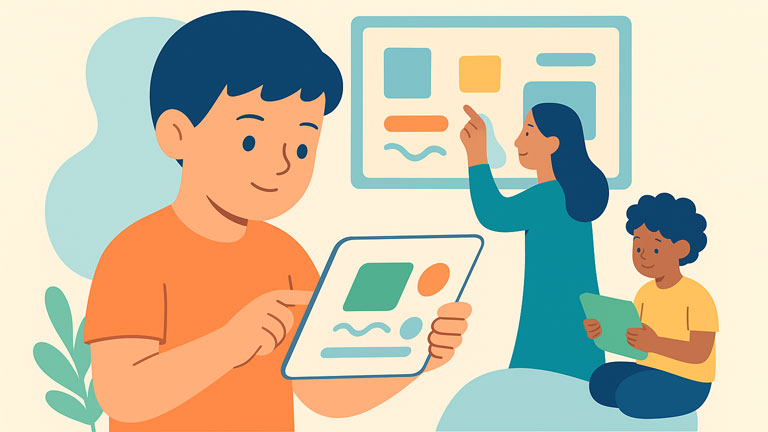A digital twin is a virtual replica of a physical object or process that uses real-world data to create simulations and predict performance. It can integrate IoT, AI, and software analytics to enhance output. With machine learning and big data, digital twins drive innovation and improve performance by allowing the testing of processes and services.
How does a digital twin work?
Digital twin technology digitally replicates a physical asset in a virtual environment, creating a real-time digital representation of the asset using smart sensors that collect data from the product. This representation can be used throughout the lifecycle of an asset, from initial product testing to real-world operating and decommissioning.
Digital twins utilize various technologies to provide a digital model of an asset, including:
Internet of Things
The Internet of Things (IoT) is a network of interconnected devices that communicate with one another and the cloud. With billions of devices now connected to the internet, digital twins rely on IoT sensor data to create a real-time view of physical objects in the digital world. The data is sent to a software platform or dashboard for easy access and analysis.
Artificial intelligence
AI is computer science focusing on solving cognitive problems related to human intelligence. ML is an AI technique that uses statistical models and algorithms to enable computers to perform tasks based on pattern recognition. Digital twin tech processes vast sensor data using ML to identify patterns and provide data insights for performance optimization, maintenance, emissions outputs, and efficiencies.
Digital twins compared to simulations
Simulations are virtual models used for design and offline optimization. Digital twins are larger in scale and enable real-time interaction and updates.
For instance, a car simulation provides an immersive training experience for new drivers to learn about car parts and real-world scenarios while virtually driving, but the scenarios are not connected to a physical car. On the other hand, a digital twin of the car is linked to the physical vehicle and has access to vital performance stats, previous service records, parts replaced in the past, potential issues observed by the sensors, and more.
Types of Digital Twins
Digital twins can be categorized into four main types, which are as follows:
Component twins- represent a single part of an asset.
Asset twins- represent how multiple components work together.
System or unit twins- show how different investments work together in a broader system.
Process twins- provide a digital view of an entire object or system, including all its components.
What challenges has it solved?
A digital twin is a versatile tool used in various industries, including automotive, healthcare, and power generation. It has already been used to solve various challenges, such as fatigue testing, corrosion resistance for offshore wind turbines, and efficiency improvements in racing cars. A digital twin allows for the investigation of solutions for product development and prototype testing, manufacturing and process improvements, and product lifecycle extension in the program rather than the real world by creating a virtual representation of a problem.
Advantages and benefits of digital twin
Digital twins provide numerous benefits to users. We’ll explore some of them:
Better R&D
Digital twins facilitate better product research and design by generating an abundance of data about expected performance outcomes. This data provides valuable insights that enable companies to make necessary product improvements before production.
Predictive capabilities
Digital twins provide a comprehensive digital and visual representation of your facility, including every piece of equipment and component. Smart sensors monitor and detect any issues or faults in real time, allowing you to take immediate action to prevent equipment breakdowns.
Greater efficiency
Digital twins can monitor production systems post-production, ensuring peak efficiency throughout the manufacturing process.
Product end-of-life
Digital twins aid manufacturers in determining the appropriate final processing, such as recycling, for products at the end of their lifecycle by identifying harvestable materials.
How has Digital Twin impacted the industry?
By integrating AI, machine learning, and software analytics with data, Digital Twin creates a simulation model that mimics physical assets, frameworks, and operations to produce continuous data. This allows companies to assess a completely computerized development cycle, anticipate downtime, react to changing circumstances, test design improvements, and de-risk product rollout. The digital twin is key to Industry 4.0, enabling automation, data exchange, and joined-up manufacturing processes while improving real-time performance optimization and assessment with minimal loss of productivity.
Where is it used?
Digital twin technology is versatile and has widespread use across various industries, including:
- Construction: Digital twin is used for planning and monitoring of residential, commercial, and infrastructure projects.
- Manufacturing: Digital twins are used for equipment monitoring and performance analysis.
- Energy sector: Leverages digital twins for project planning, optimization, and management of existing assets.
- Retail: Digital twin is used to improve the customer experience.
- Healthcare Service: Uses digital twins for tracking patient health indicators.
- Automotive Industry: Uses digital twins to improve vehicle performance and production efficiency.
- Urban Planning: Utilize digital twin technology for real-time 3D and 4D spatial data visualization and augmented reality systems in built environments.
How to design Digital Twins?
Digital twins are virtual models that can be created for various purposes, such as testing a prototype, assessing how a product or process will work under different conditions, and monitoring its lifecycle.
Data
The data of the object or process is gathered to create a virtual model to mimic the behaviors or states of the object or process. This data can include design specifications, production processes, engineering information, equipment, materials, parts, and quality control. It can also include historical analysis, real-time feedback, and maintenance records.
Modeling
Once the data is collected, computational models can be created to show how the object or process will behave. These models employ simulations based on engineering, chemistry, physics, artificial intelligence, and machine learning. To aid understanding, they can be displayed using 3D representations and augmented reality.
Linking
The findings from digital twins can be linked together to create an overview of a system. For example, the findings from equipment twins can be used to inform a factory-scale digital twin. This can enable smart industrial applications for real-world operational developments and improvements.
When to use It?
Digital twins can be categorized into three types based on the time when the process can be used.
- Digital Twin Prototype (DTP) – This is used before a physical product is created.
- Digital Twin Instance (DTI) – This is done once a product is manufactured and is used to test different usage scenarios.
- Digital Twin Aggregate (DTA) – This gathers information from DTIs to determine a product’s capabilities, run prognostics, and test operating parameters.
Digital twins can have a variety of uses, such as logistics planning, product development and redesign, quality control and management, and systems planning. They are particularly useful for testing products and processes in design, implementation, monitoring, and improvement, which can save time and money.
Bottom line
Digital twins are becoming increasingly versatile and useful as we move forward, affecting the way we design and manage various products and processes. The key to their success lies in effectively harnessing data, creating accurate computational models, and seamlessly linking findings to gain a comprehensive understanding of complex systems.
Digital twins are valuable in many stages, from early prototyping to post-manufacturing testing and even for aggregating data for comprehensive product evaluation. They can save significant time and resources, making them much more than just a technological advancement. Digital twins are the gateway to a brighter, more efficient, and sustainable future.
Read More:
The Benefits of Hiring a Professional Digital Marketing Agency sprunki horror Endless Fun Awaits!



